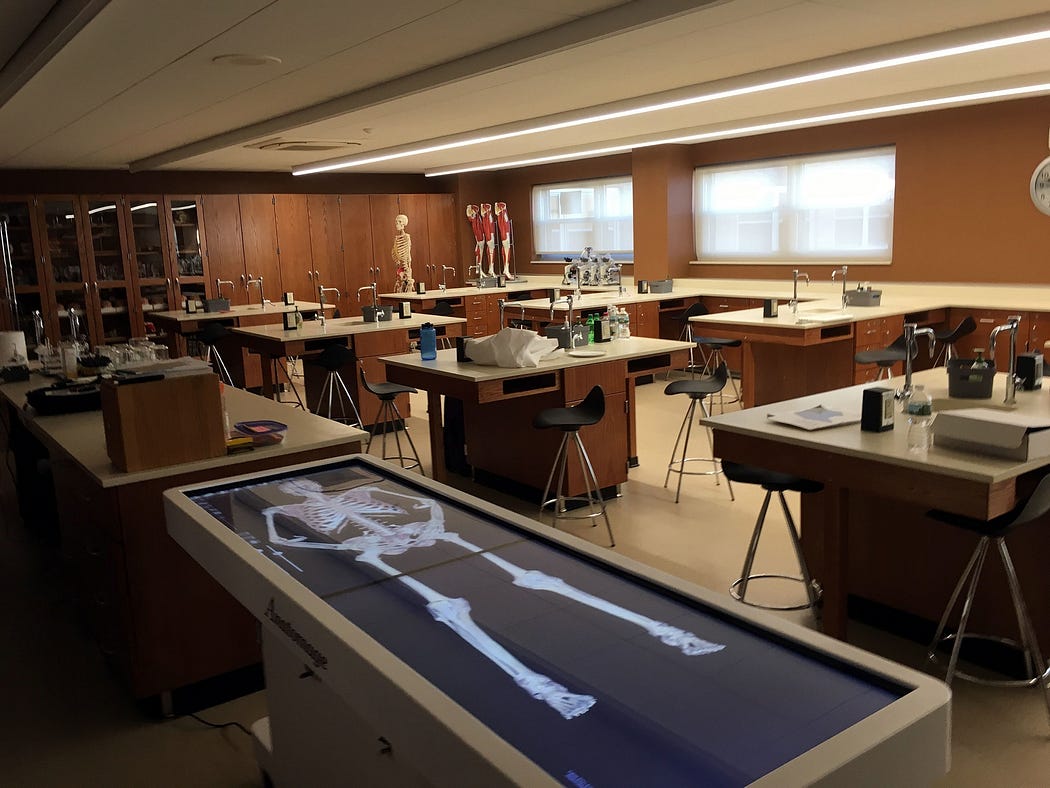Virtual Anatomy Dissection Tables vs. Real Tissue Dissection Medical Education with Anatomage and Virtual Dissectors
In recent years, advancements in medical education technology have led to a shift from traditional dissection methods to virtual anatomy dissection tables, such as those provided by Anatomage. This transition is reshaping how students, educators, and professionals engage with human anatomy. While real tissue dissection tables remain an essential part of medical training, virtual dissectors offer unique advantages that enhance learning and accessibility.

The Rise of the Virtual Anatomy Dissection Table
A virtual anatomy dissection table is a digital tool that provides an interactive platform for studying human anatomy without the need for physical cadavers. These tables allow users to explore the body layer-by-layer, viewing muscles, bones, organs, and blood vessels in precise detail. Anatomage, a pioneer in the field, has developed sophisticated tables that replicate human anatomy with high accuracy and offer an immersive experience for medical students and professionals.
The benefits of using a virtual dissector extend beyond the ability to visualize and explore human structures. These tables provide an enhanced level of control, allowing users to zoom in on specific areas, view cross-sectional slices, and perform virtual dissections with ease. The digital platform also offers flexibility in terms of accessibility, allowing educators to teach anatomy in classrooms where real tissue dissection may not be feasible.
Anatomage: A Leader in Virtual Anatomy Dissection
Anatomage has become synonymous with virtual anatomy tables, setting a standard in the industry. Their tables are equipped with advanced imaging technology that produces high-resolution, 3D anatomical representations. Each model is created using data from real human cadavers, providing a realistic experience that closely mimics traditional dissection without the associated challenges.
Anatomage tables are used worldwide, from high schools to medical schools, enhancing students’ understanding of complex anatomical structures. The tables offer comprehensive functionalities, such as radiological imaging, pathology comparisons, and even animal anatomy options, making them versatile tools for a wide range of educational needs.
Benefits of Virtual Dissection vs. Real Tissue Dissection
While real tissue dissection has long been the gold standard in medical education, virtual anatomy dissection tables provide several key advantages that complement or even surpass traditional methods. Here are a few notable benefits of each approach.

- Accessibility and Availability: Virtual dissection tables eliminate the need for cadavers, which can be scarce and costly. This allows institutions with limited resources or smaller programs to offer in-depth anatomy training. Virtual dissectors also reduce the ethical concerns related to body donation and the use of cadavers.
- Repeatability and Safety: With a virtual dissector, students can repeat procedures multiple times, allowing them to learn at their own pace without the risks of mishandling real tissue. This is especially valuable in the early stages of training, where mistakes are common but can be costly or even hazardous in real dissections.
- Environmental and Health Considerations: Traditional dissection involves chemicals such as formaldehyde for preservation, which can pose health risks to students and instructors. Virtual anatomy dissection tables provide a safe, chemical-free alternative that avoids these concerns.
- Detailed Visualization and Interactive Features: Anatomage tables and similar virtual dissectors offer interactive features that enhance the learning experience. For example, students can manipulate organs, zoom in on specific anatomical regions, and cross-reference structures. This level of interaction is not possible with real tissue dissection, but it enables a deeper understanding of complex systems.
The Role of Real Tissue Dissection in Modern Medical Education
Despite the benefits of virtual dissectors, real tissue dissection remains an irreplaceable component of medical education. Handling actual cadavers gives students a tactile experience, allowing them to understand the texture, weight, and real-life complexity of human tissues. Real tissue dissection fosters a deeper connection to the material and provides insights that digital simulations cannot fully replicate. It is often used to reinforce skills and build foundational knowledge in a way that enhances students’ respect and appreciation for the human body.

Balancing Virtual and Real Dissection in Medical Curricula
As virtual dissection technology evolves, educational institutions are increasingly adopting a blended approach that incorporates both virtual and real tissue dissection tables. This hybrid model combines the best aspects of both methods, allowing students to benefit from the precision and flexibility of virtual dissectors like Anatomage while still gaining hands-on experience with real cadavers. By integrating these tools, educators can create a more comprehensive curriculum that prepares students for the diverse demands of clinical practice.
Virtual anatomy dissection tables, such as those offered by Anatomage, represent a transformative shift in how anatomy is taught and learned. These tables provide unparalleled accessibility, safety, and detailed visualization, making them an invaluable addition to medical education. However, real tissue dissection tables remain essential for developing practical skills and a deeper understanding of the human body. Together, these tools are shaping a more innovative and effective approach to anatomical education, preparing the next generation of healthcare professionals for the challenges of modern medicine.
For more information: https://www.mavericsolution.com/

Comments
Post a Comment